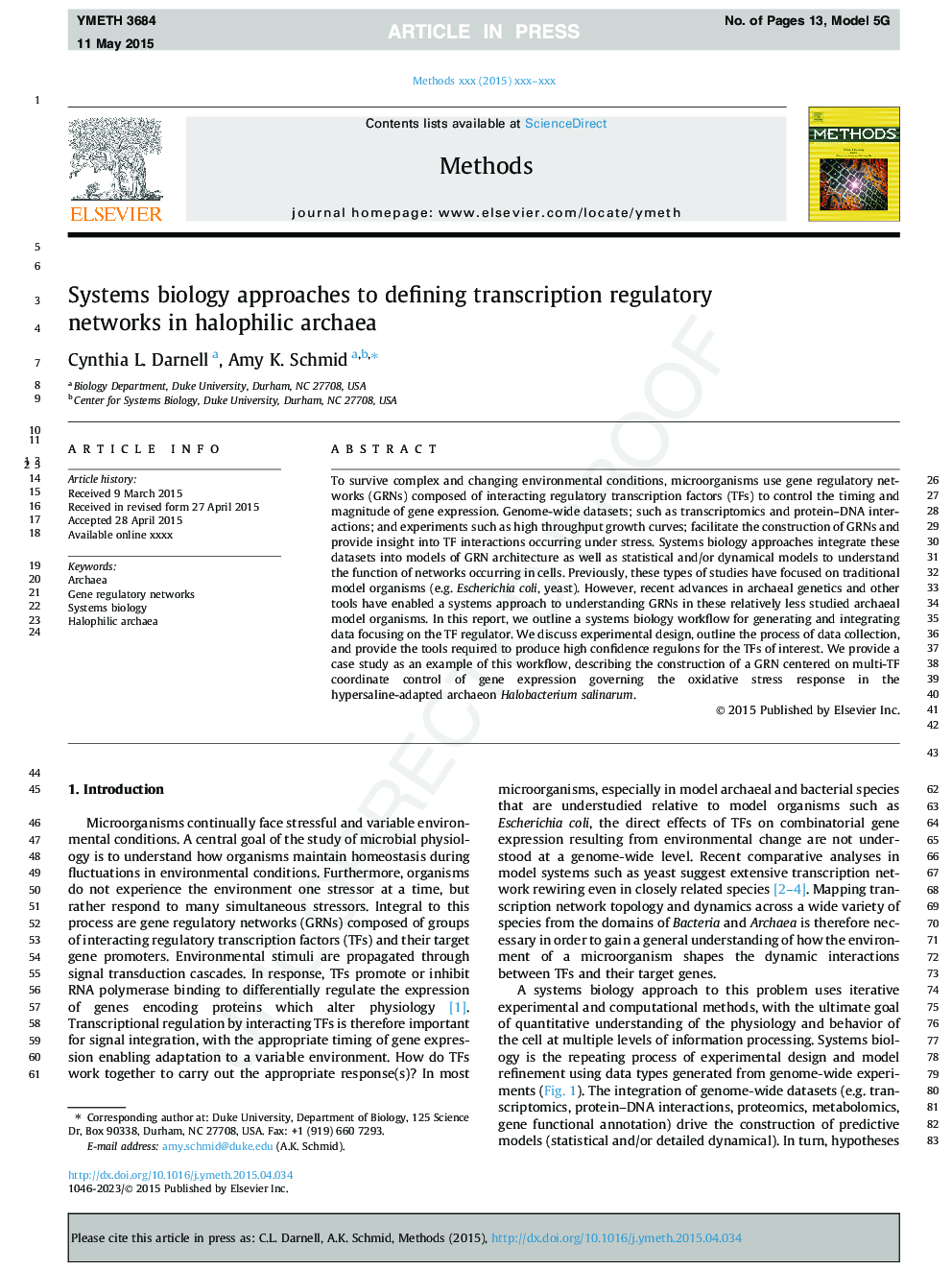| Article ID | Journal | Published Year | Pages | File Type |
|---|---|---|---|---|
| 8340557 | Methods | 2015 | 13 Pages |
Abstract
To survive complex and changing environmental conditions, microorganisms use gene regulatory networks (GRNs) composed of interacting regulatory transcription factors (TFs) to control the timing and magnitude of gene expression. Genome-wide datasets; such as transcriptomics and protein-DNA interactions; and experiments such as high throughput growth curves; facilitate the construction of GRNs and provide insight into TF interactions occurring under stress. Systems biology approaches integrate these datasets into models of GRN architecture as well as statistical and/or dynamical models to understand the function of networks occurring in cells. Previously, these types of studies have focused on traditional model organisms (e.g. Escherichia coli, yeast). However, recent advances in archaeal genetics and other tools have enabled a systems approach to understanding GRNs in these relatively less studied archaeal model organisms. In this report, we outline a systems biology workflow for generating and integrating data focusing on the TF regulator. We discuss experimental design, outline the process of data collection, and provide the tools required to produce high confidence regulons for the TFs of interest. We provide a case study as an example of this workflow, describing the construction of a GRN centered on multi-TF coordinate control of gene expression governing the oxidative stress response in the hypersaline-adapted archaeon Halobacterium salinarum.
Related Topics
Life Sciences
Biochemistry, Genetics and Molecular Biology
Biochemistry
Authors
Cynthia L. Darnell, Amy K. Schmid,
